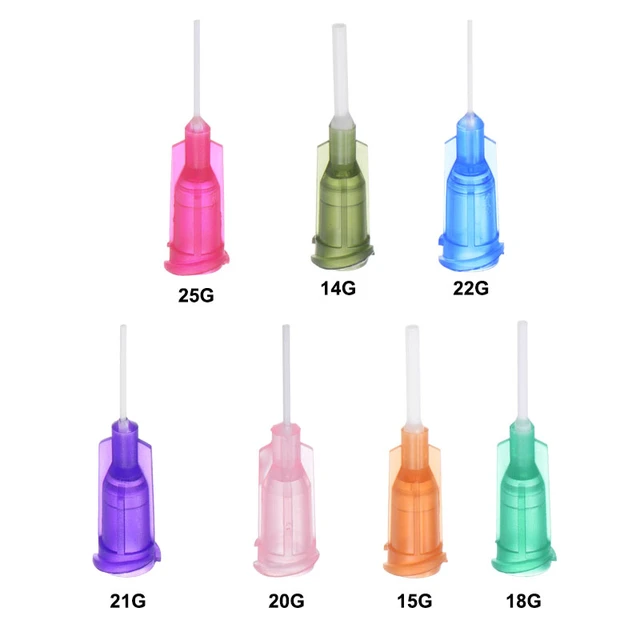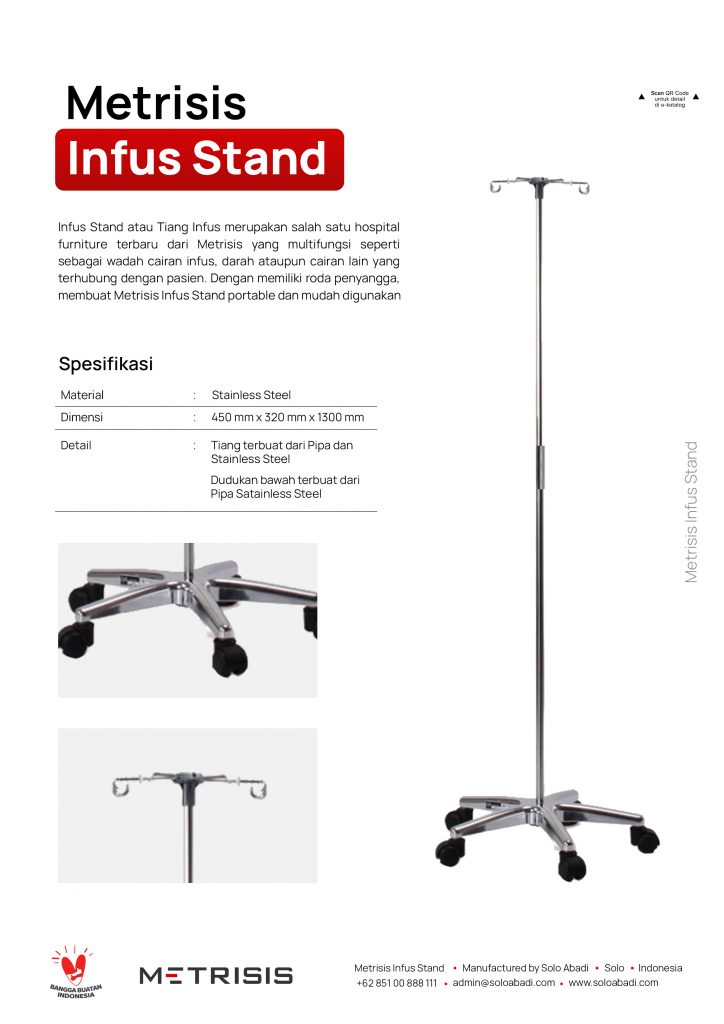Information about the size and types of IV needles is important for healthcare workers to know. Hence, the different shapes and sizes of IV needles are used for various purposes to meet different clinical needs. Here are the types of IV needles commonly used by healthcare workers!
What Factors Affect the Size and Types of IV Needles?

The size and types of IV needles need to be adjusted based on several factors. This is important to avoid complications or injuries that might occur.
Blood Vessel Size:
- Smaller blood vessels require needles with smaller diameters to reduce the risk of trauma and complications. Conversely, larger blood vessels can use needles with larger diameters to ensure adequate flow.
Type of Fluid Administered:
- Fluids with high viscosity (thicker) require needles with larger diameters to ensure smooth flow. Fluids with low viscosity can use needles with smaller diameters.
Specific Medical Needs:
- In emergency or trauma situations, larger needles (e.g., 14G or 16G) are used to deliver fluids quickly. Smaller needles (22G or 24G) are used to administer medications or small amounts of fluids, especially in pediatric or geriatric patients.
Patient Condition:
- Children or elderly patients with more fragile veins require smaller needles to reduce pain and the risk of complications. Stable adult patients can use medium-sized needles (18G or 20G).
Duration of Use:
- For long-term therapy, central catheters such as Peripherally Inserted Central Catheters (PICCs) or tunneled catheters are used because they provide greater stability and comfort.
Read More : 10 Advantages of Stainless Steel IV Poles. Must-Have for Hospitals
Types of IV Needles or Abocaths

In the medical field, IV needles are often referred to as abocaths. Like other medical devices, IV needles also adhere to international standards. IV needles or intravenous (IV) cannulas come in various sizes known as “gauge.” The gauge size indicates the needle diameter, where a smaller gauge number means a larger needle diameter.
IV needles are also specified in different colors and sizes. Here are the types of IV needles commonly used in the medical field:
1. 14 Gauge (14G) Identified by Orange Color
IV needles with a 14G gauge usually have a flow rate of 240 mL/min. They are used for rapid infusion, such as in cases of trauma or rapid fluid resuscitation. Additionally, they are used in surgical procedures, emergency blood transfusions, and intravenous fluid replacement. The high flow allows large volumes of fluid or blood to be administered quickly.
2. 16 Gauge (16G) Identified by Gray Color
IV needles with a 16G gauge usually have a flow rate of 180 mL/min. Similar to the 14G, they are used for rapid infusion but are slightly smaller, making them easier to insert into smaller blood vessels. They are intended for children over 8 years old and adults.
Read More: What is Intravenous Therapy, How it Works, and the Equipment Used
3. 18 Gauge (18G) Identified by Green Color
This IV needle is intended for children aged 1-8 years, as well as children over 8 years old and adults. The commonly used size is 90 mL/min. It is typically used for administering blood fluids, blood components, and other thick fluids.
4. 20 Gauge (20G) Identified by Pink Color
The 20G IV needle has a flow rate of 60 mL/min. It is intended for children aged 1-8 years, as well as children over 8 years old and adults. This type of IV is used for infusing blood, blood components, and other thick IV fluids.
5. 22 Gauge (22G) Identified by Blue Color
This type of IV needle has a flow rate of 36 mL/min and is typically used for patients with small veins, chemotherapy, and elderly patients. Additionally, this type of IV needle is used for administering medications, IV fluids to pediatric or geriatric patients, and situations where slower flow is acceptable.
6. 24 Gauge (24G) Identified by Yellow Color
This type of IV needle has a flow rate of 20 mL/min. It is usually used for fragile veins, and pediatric or neonatal patients. Additionally, this type is used to provide maximum comfort with minimal risk of complications.
7. 26 Gauge (26G) Identified by Purple Color
This IV needle has a flow rate of 13 mL/min. It is typically used for specific situations requiring very slow fluid administration, such as pediatric and neonatal patients, patients with difficult-to-access veins, administering small amounts of fluid, and blood sampling.
Get IV Poles and Hospital Furniture Meeting KEMENKESS Standards

PT Solo Abadi Indonesia has extensive experience in producing medical devices in Indonesia. From 2020-2023, we have collaborated with over 1000 Posyandu and more than 200 Health Departments. All our products come with a warranty, including Patient Examination Tables. For Examination Tables, we provide a 1-year warranty under terms and conditions.
Our best Customer Service can be accessed through various platforms, such as Instagram @soloabadi, website www.soloabadi.com, and WhatsApp.
The price of METRISIS IV Poles can be accessed through our Sales or Customer Service team. We prioritize the service and functionality of our equipment, so we can customize products according to your requests.
Contact us now to get the best offer for Examination Tables through Sales and Customer Service on WhatsApp.


